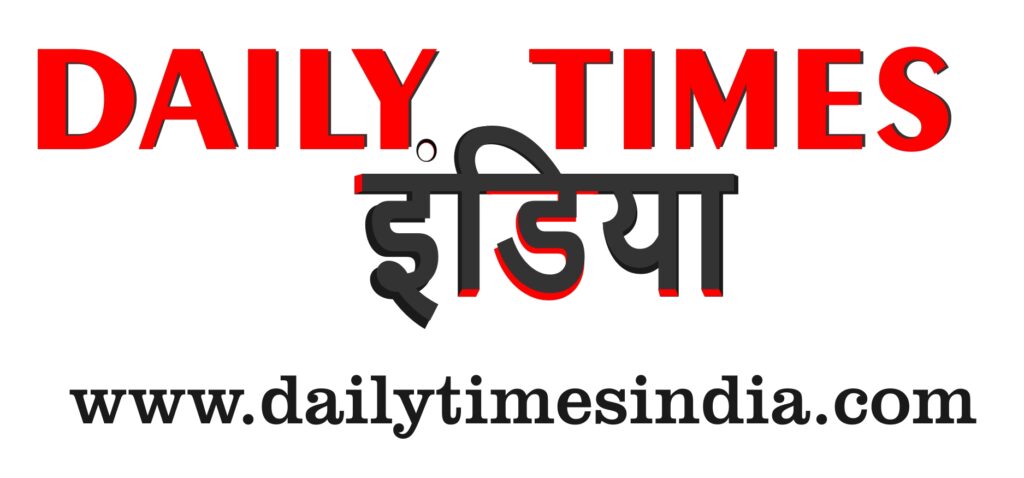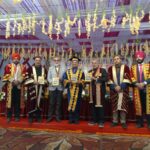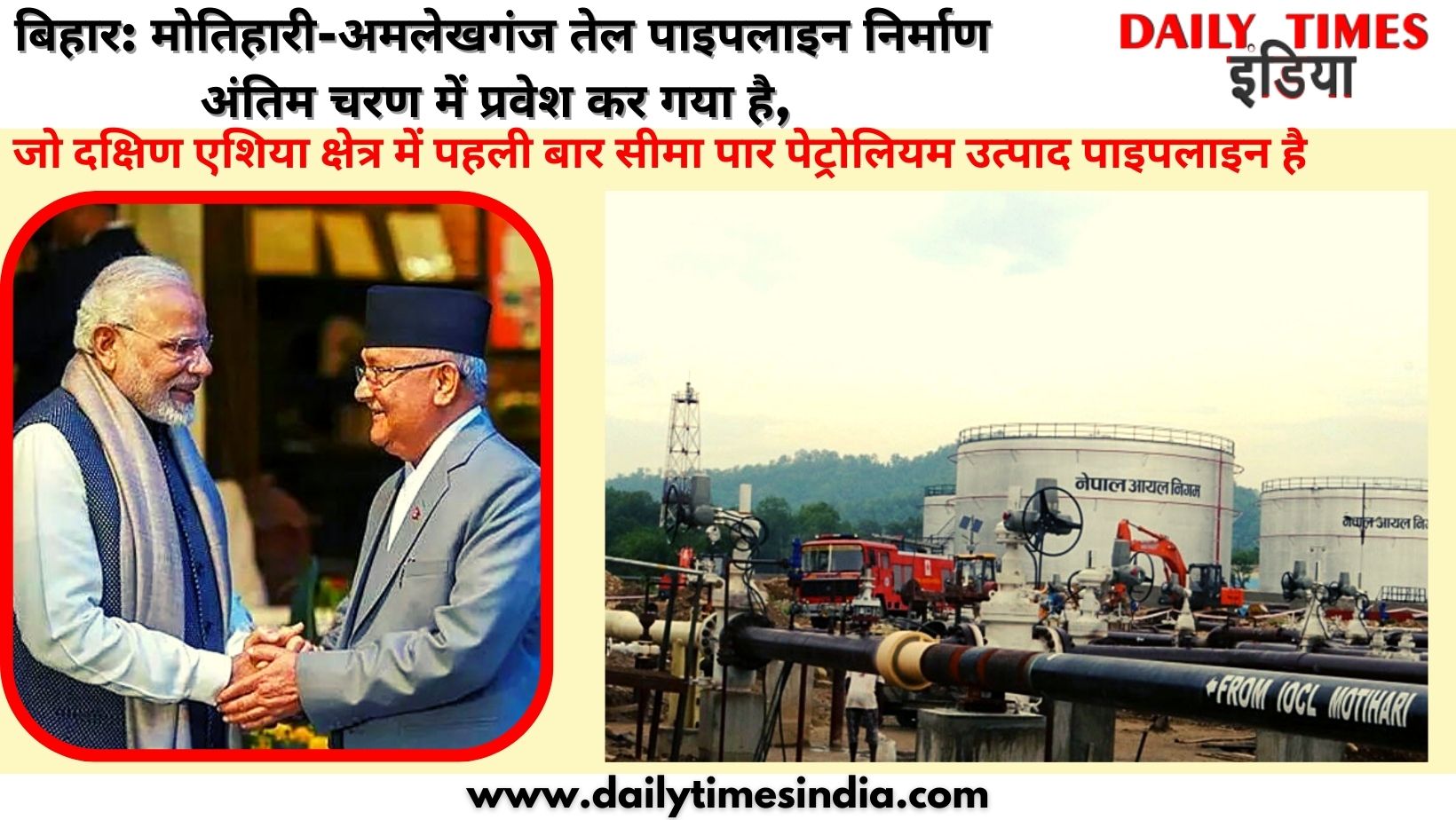Motihari: The construction of 69 km-long pipeline from Motihari to Amlekhganj in Nepal, which is the first-ever cross-border petroleum product pipeline in the South Asia region has reached its final stage, according to the report.
NOC’s Head of Madhesh Regional Office of NOC, Pradeep Kumar Yadav said that the infrastructure construction work required for importing petrol and kerosene from Motihari-Amlekhganj petroleum pipeline is in the final stage. He said that for the storage of petrol and kerosene to be supplied through the pipeline, expansion of storage capacity at Amlekhganj depot, construction of labs and automatic machines, the budget are being spent in three areas.
Nepal Oil Corporation (NOC) and Indian Oil Corporation (IOC) have also started the infrastructure construction work required to supply petrol and kerosene through pipelines at Amlekhganj depot.
NOC Yadav mentioned that out of four billion rupees to be spent on the work of supplying petrol and kerosene through the pipeline, IOC will give one billion rupees and NOC will spend three billion rupees.
Currently, only diesel is being supplied through the Nepal-India inter-country petroleum pipeline from Motihari in Bihar, India to Amlekhganj in Nepal.
Yadav said that after the start of the supply of petrol and kerosene through the pipeline from Motihari in Bihar, India to Amlekhganj in Nepal, there will be an annual saving of 1.80 billion rupees.
Similarly, He said that the expansion of storage capacity, construction of labs and work of auto machines under construction at Amlekhganj depot will be completed by February 2024 and the target will be supply of petrol and kerosene through the pipeline.
He said that two petrol tanks with a capacity of 4100 kilo liters, two transmix tanks with a capacity of 250 kilo liters, 24 fully automatic loading ways (refillers) for petrol transportation, a pump house and a laboratory are being constructed at Amlekhganj depot of NOC.
Although it is possible to import diesel, petrol and kerosene through the same pipeline, only diesel was being imported due to the lack of storage capacity in the Amlekhganj depot. Since only diesel was being supplied through the pipeline, petrol and kerosene had to be transported from Barauni in Bihar to Amlekhganj by tankers.
“Now all the three petroleum products namely petrol, diesel and kerosene are going to be imported through the pipeline. With this, the number of tankers being used for import from Amlekhganj to Barauni as well as the technical loss will be zero, the transportation cost will be saved and it will help in reducing environmental pollution,” said Yadav.
After the completion of the works conducted at the Amlekhganj depot, it is estimated that NOC will save Rs 3.8 billion annually from the petroleum products coming from the pipeline, he added.
Earlier on September 2018, Prime Minister Narendra Modi and Nepal’s PM K.P. Sharma Oli had inaugurated Motihari-Amlekhganj oil pipeline jointly via a video link had opened the region to a new energy dynamic with strategic long term ramifications.
However, The 69-km Motihari-Amlekhganj pipeline has a capacity of 2 million metric ton per annum which will provide petroleum products at affordable costs to the people of Nepal.
In fact, Nepal decided to cut oil prices by Rs 2 per litre after the pipeline was set in motion, a move set to benefit citizens.
As per the report, India has invested Rs 3.5 billion which was completed in “record time”.
“Timely completion of projects is the priority of the two governments,” PM Modi had said, “People-to-people relations are the basis of our bilateral ties.”
Earlier, oil was carried by tankers from Nepal to India as part of an agreement since 1973.
The idea for the pipeline was first mooted in 1996. The pipeline inauguration comes at a time when China has been pursuing Nepal seeking to broadbase its influence in South Asia.
In fact, even as the pipeline deal was being inaugurated, China’s foreign minister Wang Yi was in the Himalayan kingdom to “promote friendship between the two countries”.
In Kathmandu, Wang Yi had met Nepal President Bidhya Devi Bhandari.






